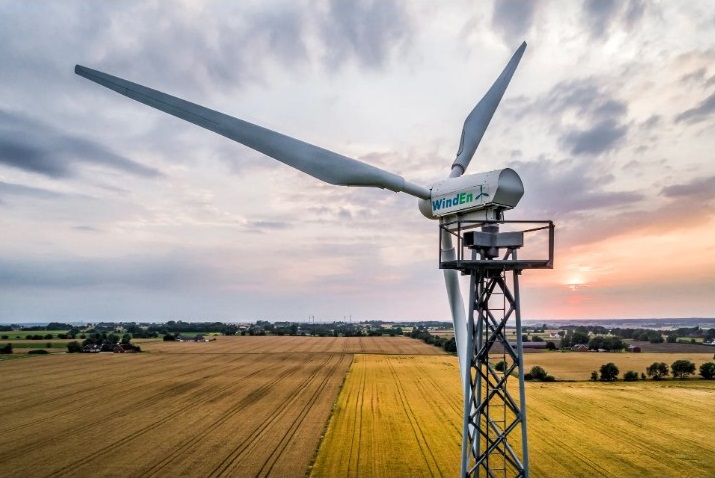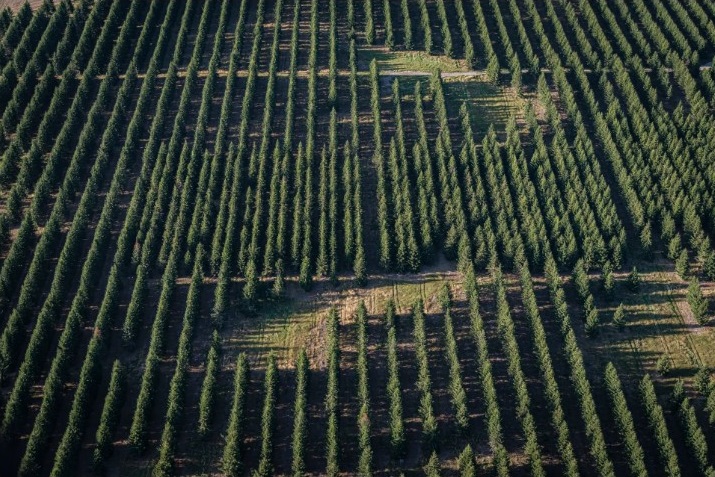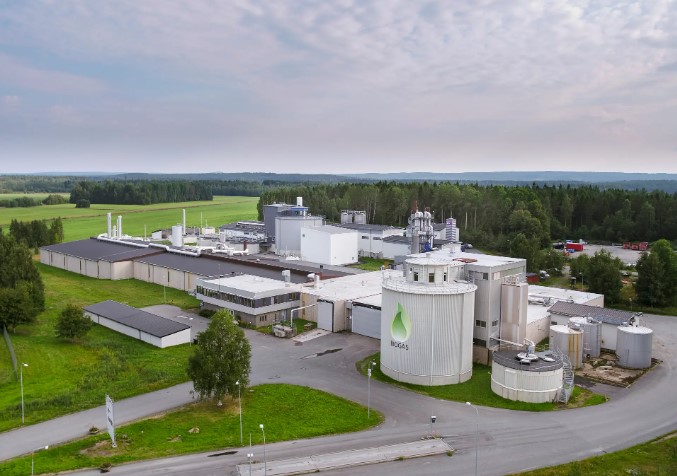To increase their use of renewable energy, the Ports of Stockholm have invested in solar panels. Photo: Jann Lipka/imagebank.sweden.se
Renewable energy could be power generated from water, wind or the sun, or any other source that is replenished through a natural process. The share of renewable energy used in Sweden keeps growing. Already in 2012 the country reached the government’s 2020 target of 50 per cent. For the power sector, the target is 100 per cent renewable electricity production by 2040.
Sweden has a rich supply of moving water and biomass, which contributes to the country’s high share of renewable energy. Hydropower (water) and bioenergy are the top renewable sources in Sweden – hydropower mostly for electricity production and bioenergy for heating.
From our partners:
Read more about energy supply and energy use in Energy in Sweden 2022, by the Swedish Energy Agency.
EU leader
In 2021, around 60 per cent of Sweden’s energy production came from renewable sources.
A green electricity certification
The government’s energy policies have also promoted the use of renewable energy. The Electricity Certificate System – a market-based support system for renewable electricity production – is one example. To qualify, electricity must come from wind, solar, geothermal or wave power; biofuels or small-scale hydroelectric plants.
Electricity retailers are required to buy a proportion of ‘green electricity’ as part of their normal supply, while power producers receive certification for the renewable electricity they generate.
High consumption, low emissions
Few countries consume more energy per capita than Sweden, but Swedish carbon emissions are low compared with those of other countries. According to statistics from the World Bank, the average American releases almost four times as much carbon dioxide (CO₂) per year into the atmosphere as the average Swede.
The reason for Sweden’s low emission rate is that nearly 75 per cent of electricity production in Sweden comes from hydroelectric (43%) and nuclear (31%) power. Sweden currently has three nuclear plants with six nuclear reactors in commercial operation.
Some 16 per cent of the electricity comes from wind power. Also, combined heat and power (CHP) plants account for around 9 per cent of the electricity output in Sweden, and these are mainly powered by biofuels.



Free market
Since 1996 Swedes have been able to choose their power supplier. Around 140 companies sell electricity to Swedish consumers.
Green energy sources
Wind power
Wind power has been the fastest growing source of renewable energy around the world in recent years, and capacity is expanding in Sweden. In 2000 Swedish production totalled 0.5 TWh, for 2021 that figure was 27.4 TWh. Today, there are more than 4,300 wind turbines in Sweden.
Bioenergy
The largest source of bioenergy in Sweden is the forest. Sweden has more forest than most other countries – 69 per cent of the land area. Bioenergy is primarily used for heating – both in private homes and in district heating – as well as for electricity production and for industrial processes.
Solar energy
The Swedish solar cell market is still limited, with solar energy accounting for around 1 per cent of the total energy generated. The Swedish Energy Agency invests in research into solar power, solar photovoltaics (PV) and solar fuels, and also offers investment support to private, public and commercial actors.
Wave power
In the transition to a sustainable society, wave power may be an important technology in the future, but it is still relatively undeveloped. It is a challenge to make the technology commercially viable.
Energy declarations
There is a law on energy declarations in Sweden. The declaration shows how much energy a building consumes in comparison with others.
Heat pumps
A heat pump uses renewable energy sources by transferring heat from the ground, lake water or the air. The number of heat pumps in Sweden has increased dramatically since the 1990s, which has contributed to less energy being used for heating and hot water in buildings.
Ethanol
Ethanol research began in the 1980s, and Sweden has been among the world leaders in this field. But the environmental benefits compared with petrol have been much debated since fertile land is used to produce ethanol, which is made from sugar canes, grains, sugar beets or cellulose.
Hydrogen
Using hydrogen is another potential means of decreasing carbon dioxide emissions. Among with many other countries, Sweden is looking into the possibility of using hydrogen as fuel, or for electricity or heating.
Body heat
So-called passive houses are built without conventional heating systems and are kept warm by the heat given off by their occupants and electrical appliances. Sweden’s first passive house was completed in 2001. Since then, more buildings have followed. In Stockholm, the body heat from commuters passing through the central station is used to heat a nearby building, and in the southern town of Växjö, there are passive high-rises.
For enquiries, product placements, sponsorships, and collaborations, connect with us at hello@zedista.com. We'd love to hear from you!
Our humans need coffee too! Your support is highly appreciated, thank you!

